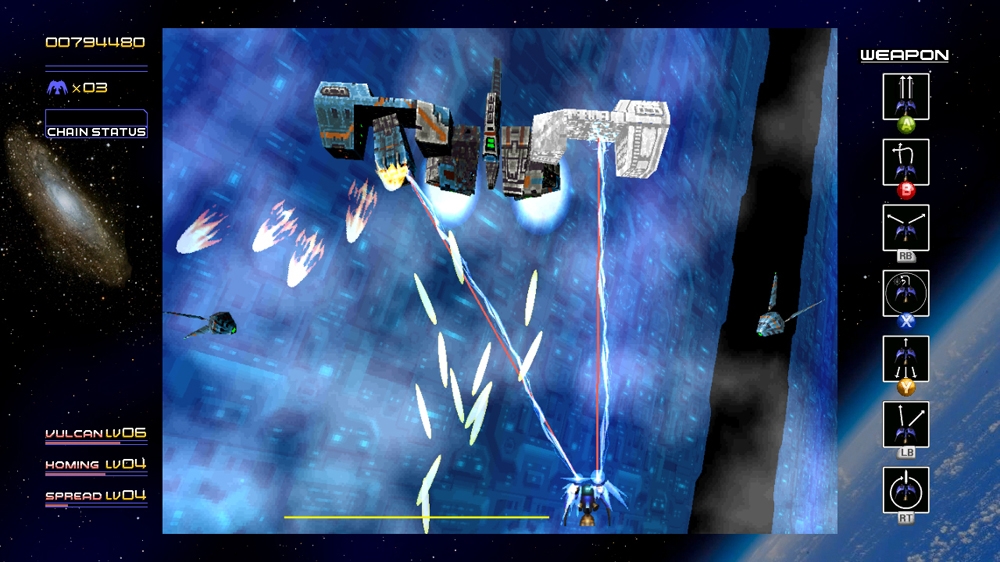
As flashy and well done as the "modern" aesthetics are, the updated look was inconsequential and at times disruptive.

Seeing how Radiant Silvergun is a game about pixel-perfect precision, it's incredibly difficult to be pixel-perfect when the pixels have been blurred and blended and bloomed. These upgrades can be disabled at any time, however, to reveal the charmingly jagged, pixelated Saturn-y goodness that lies beneath. Now, through the magic of XBLA, an entirely new generation of gamers are being exposed to the genesis of bullet-hell, and even after 13 years, Radiant Silvergun is still a relevant, infuriating masterpiece.%Gallery-102402% What's new this time around? Treasure realizes that Radiant Silvergun's target demographic is the same hardcore 2D shmup enthusiast that loved the game 13 years ago, so it was careful to make sparing, minor changes and leave the core gameplay formula intact.Ī slight graphical overhaul has upscaled texture resolutions and replaced the Saturn's mesh sprites with true transparency effects, something the Saturn's hardware was incapable of. Despite the fact that it was never released stateside, Treasure's manic 1998 shooter is thought of as a definitive Saturn classic, which continues to influence contemporary shmups even to this day. While the Crash Bandicoots, Crocs, and Super Mario 64s of the period were pioneering the field of depth perception, the Saturn became a safe haven for 2D skill-based games like Radiant Silvergun.

Unlike its contemporaries whose processing architectures were designed to excel at 3D graphics (not 3D-glasses 3D, just, you know, polygons), the Saturn's extremely complex and unconventional processor configuration was uniquely suited for 2D, sprite-based games.

It may not have garnered the same enthusiastic posthumous cult following as its little brother, but the Sega Saturn was a very good console - provided you were a very specific type of gamer.


 0 kommentar(er)
0 kommentar(er)
